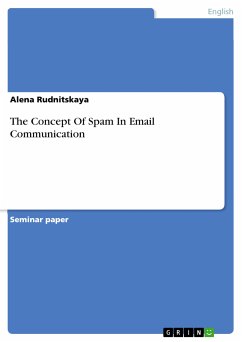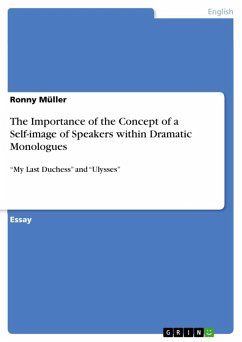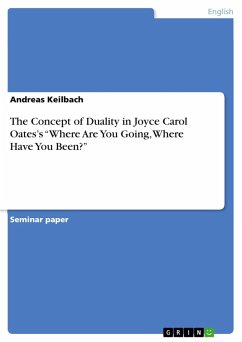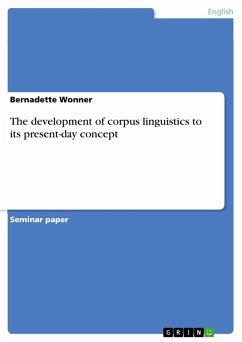Seminar paper from the year 2006 in the subject English Language and Literature Studies - Linguistics, grade: keine, LMU Munich (Department für Anglistik und Amerikanistik), course: Internet Communication, language: English, abstract: The communication by email has become one of the most important means of communication in cooperate and private. An internet user is constantly confronted by mass emails containing undesired information. Spam, defined as bulk unsolicited emailing, generally commercial in nature, and predominately fraudulent. Spam causes high charges and damages. Nucleus Research announced that the spam epidemic is costing US businesses $712 per employee each year in lost worker productivity. As a result, users are spending 16 seconds identifying and deleting each spam e-mail, which translates into an annual cost of $70 bln to all US businesses. Looking at the total e-mail traffic, Nucleus estimates that at least 90% of e-mail reaching corporate servers is spam. The average user receives 21 spam messages to their inbox each day. (Moskalyuk 2007) Regardless of the inefficient time spent, there are further costs caused by spam, such as (cf Filterpoint 2008): · Deleted emails remain stored in the trash folder. · Higher storage costs through higher server expenses. · Higher bandwith essential to store the spam mails. · Time spent by IT staff for anti-spam measures. · Recovery costs after a virus attack. Various experts provide a spam calculator that enables to determine the approximate annual costs for an enterprise created by spam. (Gibbs 2003, Commtouch 2007) The calculator introduced by Gibbs differentiates productivity, connectivity, storage and support costs. This Spam Cost Analysis Model can be found in appendix 1 of this work. In this work different types of spam in general and in specific will be pointed out and characterized. Measures against unsolicited emails will be reviewed. First I start with the definition of spam and where it comes from, followed with the spam history. Then I briefly list the most common categories and variants of spam used. The next step will be the revision of a present situation captured by Commtouch and Symantec, as well as statistics on the information learned through spam monitoring during the last few months, with the examples of its usage. I conclude with an overview of spam solutions offered and point out further research topics in the area.
Dieser Download kann aus rechtlichen Gründen nur mit Rechnungsadresse in A, B, BG, CY, CZ, D, DK, EW, E, FIN, F, GR, HR, H, IRL, I, LT, L, LR, M, NL, PL, P, R, S, SLO, SK ausgeliefert werden.









